Download CY-1173
Transcript
On ly! CaM kinase II Assay Kit User’s Manual For Research Use Only, Not for use in diagnostic procedures Non-Radioisotopic Kit for Measuring CaM kinase II Activity CycLex CaM kinase II Assay Kit Pu rp Intended Use................................................ 1 Storage......................................................... 1 Introduction.................................................. 2 Principle of the Assay.................................. 3 Materials Provided....................................... 4 Materials Required but not Provided........... 5 Precautions and Recommendations............. 6 Detailed Protocol......................................... 7-10 Evaluation of Results...................................11 Assay Characteristics...................................11 Troubleshooting...........................................11 Reagent Stability..........................................11 Sample Preparation..................................... 12-13 Example of Test Results............................. 14-17 References................................................... 18 os e Cat# CY-1173 Intended Use en ce The CycLex Research Product CycLex CaM kinase II Assay Kit is primarily designed to measure the activities of purified Ca2+/Calmodulin dependent protein kinase II (CaM kinase II) for the rapid and sensitive evaluation of inhibitors or activators. The phospho-serine monoclonal antibody used in this assay kit has been demonstrated to recognize the phospho-serine residue in “Syntide-2”, which is efficiently phosphorylated by CaM kinase II. Additionally, column fractions of cultured primary cell, cell line, or tissue homogenate can be assayed for CaM kinase II activity with the CycLex Research Product CycLex CaM kinase II Assay Kit if the appropriate dose of CaM kinase II specific inhibitor is used. er Applications of this kit include: 1) Monitoring the purification of CaM kinase II. 2) Screening inhibitors or activators of CaM kinase II 3) Detecting the effects of pharmacological agents on CaM kinase II activity. This assay kit is for research use only and not for use in diagnostic or therapeutic procedures. ef Storage rR • Upon receipt store all components at 4°C. • Don’t expose reagents to excessive light. Fo Cat#: CY-1173 1 Version#: 150310 On ly! CaM kinase II Assay Kit User’s Manual For Research Use Only, Not for use in diagnostic procedures Introduction ce Pu rp os e Ca2+/CaM-dependent protein kinase II (CaM kinase II) is a ubiquitously expressed protein kinase that transduces elevated Ca2+ signals in cells to a number of target proteins ranging from ion channels to transcriptional activators. CaM kinase II has a unique holoenzyme structure and autoregulatory properties that allow it to give a prolonged response to transient Ca2+ signals and to sense cellular Ca2+ oscillations (1). In neurons CaM kinase II is highly expressed and localized with certain subcellular structures. Upon activation it can translocate to excitatory synapses where it regulates a number of proteins involved in synaptic transmission and its downstream signaling pathways. Changes in intracellular calcium can display variable responses ranging from highly localized, transient elevations within subcellular structures (e.g. a dendritic spine of a neuron) to Ca2+ waves that spread throughout the cell including the nucleus. The most ubiquitous calcium-sensing protein is Calmodulin (CaM), which contains four “EF” hand motifs with high specificity for binding Ca2+. The Ca2+/CaM complex interacts with and modulates the functionality of a large number of proteins (2) including several Ser/Thr protein kinases. The CaM kinase II family is encoded by four genes (alpha, beta, gamma, and delta) that also exhibit alternative splicing. The gamma and delta isoforms are expressed in most tissues, whereas the alpha and beta isoforms are most prominent in neural tissues and comprise up to 2 % of the total protein in the hippocampus of rodents and up to 1% of the total protein in the forebrain itself (3). The various CaM kinase II subunits are comprised of an N-terminal catalytic region, a central regulatory domain containing an autoinhibitory domain (AID) and Ca2+/CaM binding motif, a variable sequence, and the C-terminal subunit association domain (4). The holoenzyme is an oligomeric protein comprised of twelve 50–60-kDa subunits arranged as two stacked hexameric rings (5, 6). The C-terminal association domains form the central core of each ring with the N-terminal catalytic domains projecting outward. In the absence of bound Ca2+/CaM, the CaM kinase II is maintained in an inactive conformation because of an interaction of the AID with the catalytic domain of its own subunit. The Ca2+/CaM complex binds to a sequence that partially overlaps the AID, presumably causing a conformational change and thereby disrupting interaction of the AID with the catalytic domain and producing kinase activation. Interestingly, the sensitivity of CaM kinase II to activation by Ca2+/CaM depends on the subunit composition of the holoenzyme (7). Measurement of CaM kinase II activity rR ef er en The protocol generally regarded as most sensitive for the quantitative measurement of CaM kinase II activity involves incubation of the CaM kinase II sample with substrate, either a natural or synthetic polypeptide (such as a Syntide-2), in the presence of Mg2+and 32P-labeled ATP. The reaction is terminated by "spotting" a sample onto a phosphocellulose P81 filter paper disc, followed by washing extensively to remove unincorporated radiolabel and the incorporated radioactivity on P81 filter is counted. While sensitive, this method is labor-intensive, generates hazardous radioactive waste, and depends on a radioisotope of short half-life. It is particularly unsuitable when kinase assays are only performed on an infrequent basis. The CycLex Research Product CycLex CaM kinase II Assay Kit uses a peroxidase coupled anti-sequence-specific phosphoserine monoclonal antibody as a reporter molecule in a 96-well ELISA format. This assay provides a non-isotopic, sensitive and specific method to detect CaM kinase II activity. The CycLex Research Product CycLex CaM kinase II Assay Kit is designed to accurately determine the presence and relative amount of CaM kinase II activity in purification column fractions, and for the non-isotopic kinetic analysis of CaM kinase II activity. Careful attention to extraction methods and the assay protocol will provide the investigator with a reliable tool for the evaluation of CaM kinase II. Fo Cat#: CY-1173 2 Version#: 150310 On ly! CaM kinase II Assay Kit User’s Manual For Research Use Only, Not for use in diagnostic procedures Principle of the Assay Pu rp os e The CycLex Research Product CycLex CaM kinase II Assay Kit is a single-site, semi-quantitative immunoassay for CaM kinase II activity. Plates are pre-coated with a newly designed “Syntide-2”, which can be efficiently phosphorylated by CaM kinase II on a microtiter plate. The detector antibody is MS-6E6, an antibody that specifically detects only the phosphorylated “Syntide-2”. The CycLex Research Product CycLex CaM kinase II Assay Kit might be used to determine the presence of CaM kinase II activity in purification column fractions, or to follow the kinetics of a purified CaM kinase II protein as well as screening CaM kinase II inhibitor or activator. To perform the test, the sample is diluted in Kinase Buffer, pipetted into the wells and allowed to phosphorylate the bound substrate in the presence of Mg2+ and ATP. The amount of phosphorylated substrate is measured by binding it with a horseradish peroxidase conjugate of MS-6E6, a anti-phospho-Syntide-2 monoclonal antibody, which then catalyzes the conversion of the chromogenic substrate tetra-methylbenzidine (TMB) from a colorless solution to a blue solution (or yellow after the addition of stopping reagent). The color is quantified by spectrophotometry and reflects the relative amount of CaM kinase II activity in the sample. For kinetic analysis, the sample containing CaM kinase II is added to the wells in a similar fashion and at varying times the reaction is stopped by the addition of a chelator, sodium ethylenediaminetetraacetate (EDTA) and the amount of phosphorylated substrate determined as before. The CycLex Research Product CycLex CaM kinase II Assay Kit is designed to determine non-isotopic kinetic analysis of CaM kinase II. Careful attention to extraction and purification methods and the assay protocol will provide the investigator with a reliable tool for the evaluation of CaM kinase II activity. Summary of Procedure Add 100 µL of assay mixture to the wells Incubate for 30 min at 30°C ce Wash the wells Add 100 µL of HRP conjugated anti-phospho-Syntide-2 antibody Incubate for 60 min at room temp. en Wash the wells er Add 100 µL of Substrate Reagent Add 100 µL of Stop Solution rR ef Measure absorbance at 450 nm Fo Cat#: CY-1173 3 Version#: 150310 On ly! CaM kinase II Assay Kit User’s Manual For Research Use Only, Not for use in diagnostic procedures Materials Provided All samples and standards should be assayed in duplicate. The following components are supplied and are sufficient for the one 96-well microtiter plate kit. Microplate: One microplate supplied ready to use, with 96 wells (12 strips of 8-wells) in a foil, zip-lock bag with a desiccant pack. Wells are coated with Syntide-2 as a substrate. 10X Wash Buffer: One bottle containing 100 mL of 10X buffer containing 2 %Tween®-20 os e Kinase Buffer: One bottle containing 20 mL of 1X buffer; used for Kinase Reaction Buffer and sample dilution. 50X CaCl2: One vial containing 0.4 mL of 125 mM CaCl2, used for Kinase Reaction Buffer (Ca/CaM plus). Pu rp 50X EGTA: One vial containing 0.4 mL of 100 mM EGTA, used for Kinase Reaction Buffer (Ca/CaM minus). 20X ATP: One vial of lyophilized ATP Na2 salt. HRP conjugated Detection Antibody: One vial containing 12 mL of HRP (horseradish peroxidase) conjugated anti-phospho-Syntide-2 monoclonal antibody (MS-6E6). Ready to use. Substrate Reagent: One bottle containing 20 mL of the chromogenic substrate, tetra-methylbenzidine (TMB). Ready to use. rR ef er en ce Stop Solution: One bottle containing 20 mL of 1 N H2SO4. Ready to use. Fo Cat#: CY-1173 4 Version#: 150310 On ly! CaM kinase II Assay Kit User’s Manual For Research Use Only, Not for use in diagnostic procedures Materials Required but not Provided • CaM kinase II Positive Control: Available from CycLex (Cat # CY-E1173); The positive control should be added to the first well at 15 m units/well. Unused CaM kinase II enzyme should be stored in aliquots at below -70°C. • 100X Calmodulin: 100X Calmodulin is included in CycLex CaM kinase II Positive Control (Cat # CY-E1173). One vial contains 200 µL of 25 µg/mL calmodulin derived from bovine brain. os e • 10X Staurosporine (1 µM): Staurosporine is available from Sigma, Cat#. S-4400. 100 µM stock solution (DMSO) diluted 1:100 in Kinase Buffer. • Pipettors: 2-20 µL, 20-200 µL and 200-1000 µL precision pipettors with disposable tips. • Precision repeating pipettor • Wash bottle or multichannel dispenser for plate washing. • Vortex mixer Pu rp • Microcentrifuge and tubes for sample preparation. • Plate reader capable of measuring absorbance in 96-well plates at dual wavelengths of 450 nm/540 nm. Dual wavelengths of 450/550 or 450/595 nm can also be used. The plate can also be read at a single wavelength of 450 nm, which will give a somewhat higher reading. • 500 or 1000 mL graduated cylinder ce • Reagent reservoirs rR ef er en • Deionized water of the highest quality Fo Cat#: CY-1173 5 Version#: 150310 Precautions and Recommendations On ly! CaM kinase II Assay Kit User’s Manual For Research Use Only, Not for use in diagnostic procedures • Store the CaM kinase II Positive Control at below -70°C and the ATP at -20°C in aliquots. Store all other components at 4°C. Do not expose reagents to excessive light. Avoid freeze/thaw cycles. • Allow all the components to come to room temperature before use. • All microplate strips that are not immediately required should be returned to the zip-lock pouch, which must be carefully resealed to avoid moisture absorption. • Use only the microtiter wells provided with the kit. • Rinse all detergent residue from glassware. • Do not mix reagents from different kits. Pu rp • Use deionized water of the highest quality. os e • Do not use kit components beyond the indicated kit expiration date. • The buffers and reagents in this kit may contain preservatives or other chemicals. Care should be taken to avoid direct contact with these reagents. • Do not mouth pipet or ingest any of the reagents. • Do not smoke, eat, or drink when performing the assay or in areas where samples or reagents are handled. ce • Dispose of tetra-methylbenzidine (TMB) containing solutions in compliance with local regulations. • Avoid contact with Substrate Solution which contains hydrogen peroxide. • Avoid contact with Stop Solution which contains Sulfuric Acid. en • In case of contact with the Stop Solution and the Substrate Solution, wash skin thoroughly with water and seek medical attention, when necessary. • Biological samples may be contaminated with infectious agents. Do not ingest, expose to open wounds or breathe aerosols. Wear protective gloves and dispose of biological samples properly. rR ef er • CAUTION: Sulfuric Acid is a strong acid. Wear disposable gloves and eye protection when handling Stop Solution. Fo Cat#: CY-1173 6 Version#: 150310 On ly! CaM kinase II Assay Kit User’s Manual For Research Use Only, Not for use in diagnostic procedures Detailed Protocol The CycLex Research Product CycLex CaM kinase II Assay Kit is provided with removable strips of wells so the assay can be carried out on separate occasions using only the number of strips required for the particular determination. Since experimental conditions may vary, an aliquot of the CaM kinase II Positive Control (Cat # CY-E1173) including calmodulin, available separately from CycLex, should be included in each assay as a positive control. Disposable pipette tips and reagent troughs should be used for all liquid transfers to avoid cross-contamination of reagents or samples. os e Preparation of Working Solution 1. Prepare a working solution of Wash Buffer by adding 100 mL of the 10X Wash Buffer (provided) to 900 mL of ddH2O. Mix well. Store at 4°C for two weeks or -20°C for long-term storage. 2. Prepare 20X ATP Solution by adding 1.6 mL of ddH2O to the vial of 20X ATP (provided, lyophilized). Mix gently until dissolved. The final concentration of the 20X ATP Solution should be 1.25 mM. Store the solution in small aliquots (e.g. 100 µL) at -20°C. Kinase Buffer (provided) 20X ATP Solution 50X CaCl2 (provided) 100X Calmodulin* Total Pu rp 3. Prepare Kinase Reaction Buffer (Ca/CaM plus) by mixing following reagents. 96 assays 10 assays 1 assay 9.2 mL 0.5 mL 0.2 mL 0.1 mL 920 µL 50 µL 20 µL 10 µL 92 µL 5 µL 2 µL 1 µL 10 mL 1000 µL 100 µL ce * 100X Calmodulin is included in CycLex CaM kinase II positive control (Cat# CY-E1173): a final concentration of Calmodulin should be c.a. 200 ng/mL. You will need 80 µL of Kinase Reaction Buffer (Ca/CaM plus) per assay well. Mix well. Discard any unused Kinase Reaction Buffer (Ca/CaM plus) after use. en 4. Prepare Kinase Reaction Buffer (Ca/CaM minus) by mixing following reagents. 10 assays 1 assay Kinase Buffer (provided) 20X ATP Solution 50X EGTA (provided) H2O 9.2 mL 0.5 mL 0.2 mL 0.1 mL 920 µL 50 µL 20 µL 10 µL 92 µL 5 µL 2 µL 1 µL Total 10 mL 1000 µL 100 µL ef er 96 assays rR In the case of assaying individual column fractions, we recommend you to measure the kinase activity in the absence of Calcium/Calmodulin as well as in the presence of these in parallel (See Example of Test Result Fig. 4. p16). Fo Cat#: CY-1173 7 Version#: 150310 On ly! CaM kinase II Assay Kit User’s Manual For Research Use Only, Not for use in diagnostic procedures Standard Assay 1. Remove the appropriate number of microtiter wells from the foil pouch and place them into the well holder. Return any unused wells to the foil pouch, refold, seal with tape and store at 4°C. 2. Prepare all samples (diluted with Kinase Buffer as needed). All samples should be assayed in duplicate. os e 3. To assay individual column fractions, add 10 µL of each fraction to the wells of the assay plate on ice. Duplicate wells containing 15 mUnits/10 µL CaM kinase II Positive Control (Cat # CY-E1173) should be included in each assay as a positive control for phosphorylation. 4. Begin the kinase reaction by addition of 90 µL Kinase Reaction Buffer (Ca/CaM plus) or Kinase Reaction Buffer (Ca/CaM minus) per well, cover with plate sealer, and incubate at 30°C for 30 minutes. Pu rp 5. Wash wells five times with Wash Buffer making sure each well is filled completely. Remove residual Wash Buffer by gentle tapping or aspiration. 6. Pipette 100 µL of HRP conjugated Detection Antibody into each well, cover with a plate sealer and incubate at room temperature (ca.25°C) for 60 minutes. Discard any unused conjugate. 7. Wash wells five times with Wash Buffer making sure each well is filled completely. Remove residual Wash Buffer by gentle tapping or aspiration. 8. Add 100 µL of Substrate Reagent to each well and incubate at room temperature (ca.25°C) for 5–15 minutes. ce 9. Add 100 µL of Stop Solution to each well in the same order as the previously added Substrate Reagent. en 10. Measure absorbance in each well using a spectrophotometric plate reader at dual wavelengths of 450/540 nm. Dual wavelengths of 450/550 or 450/595 nm can also be used. Read the plate at 450 nm if only a single wavelength can be used. Wells must be read within 30 minutes of adding the Stop Solution. Note-1: Complete removal of liquid at each step is essential to good performance. After the last wash, remove any remaining Wash Buffer by aspirating or decanting. Invert the plate and blot it against clean paper towels. er Note-2: Reliable signals are obtained when either O.D. values do not exceed 0.25 units for the blank (no enzyme control), or 2.5 units for the CaM kinase II positive control. rR ef Note-3: If the microplate reader is not capable of reading absorbance greater than the absorbance of the Wee1 positive control, perform a second reading at 405 nm. A new O.D. values, measured at 405 nm, is used to determine CaM kinase II activity of off-scale samples. The readings at 405 nm should not replace the on-scale readings at 450 nm. Fo Cat#: CY-1173 8 Version#: 150310 On ly! CaM kinase II Assay Kit User’s Manual For Research Use Only, Not for use in diagnostic procedures Kinetic Assay 1. Remove the appropriate number of microtiter wells from the foil pouch and place them into the well holder. Return any unused wells to the foil pouch, refold, seal with tape and store at 4°C. 2. Prepare all enzyme samples (diluted with Kinase Buffer as needed). All enzyme samples should be assayed in duplicate. os e 3. To assay enzyme sample, add 10 µL of each enzyme sample or CaM kinase II Positive Control (Cat # CY-E1173) to the wells of the assay plate. Duplicate wells containing 15 mUnits/10 µL CaM kinase II Positive Control (Cat # CY-E1173) should be included in each assay as a positive control for phosphorylation. 4. Begin kinase reaction by addition of 90 µL Kinase Reaction Buffer in duplicate per well in timed intervals (suggested interval is 1 minutes but should be individually determined for each system). After the final addition, incubate at 30°C for 15 minutes. Pu rp 5. Stop the reaction by flicking out the contents. (Alternatively, the reaction may be terminated by the addition of 150 µL 0.1 M Na EDTA, pH 8.0 to each well). 6. Wash wells five times with Wash Buffer making sure each well is filled completely. Remove residual Wash Buffer by gentle tapping or aspiration. 7. Pipette 100 µL of HRP conjugated Detection Antibody into each well, cover with a plate sealer and incubate at room temperature (ca.25°C) for 60 minutes. Discard any unused conjugate after use. 8. Wash wells five times with Wash Buffer making sure each well is filled completely. Remove residual Wash Buffer by gentle tapping or aspiration. ce 9. Add 100 µL of Substrate Reagent to each well and incubate at room temperature (ca.25°C) for 10-15 minutes. en 10. Add 100 µL of Stop Solution to each well in the same order as the previously added Substrate Reagent. er 11. Measure absorbance in each well using a spectrophotometric plate reader at dual wavelengths of 450/540 nm. Dual wavelengths of 450/550 or 450/595 nm can also be used. Read the plate at 450 nm if only a single wavelength can be used. Wells must be read within 30 minutes of adding the Stop Solution. Recommendations rR ef Special considerations when screening activators and inhibitors In order to estimate the inhibitory effect on CaM kinase II activity in the test chemicals correctly, it is necessary to conduct the control experiment of “Solvent control” at least once for every experiment and “Inhibitor control” at least once for the first experiment, in addition to “Test sample”, as indicated in the following table. When test chemicals cause an inhibitory effect on CaM kinase II activity, the level of A450 is weakened as compared with “Solvent control”. The high level of A450 is not observed in “Inhibitor control” (usually A450<0.3). Fo Cat#: CY-1173 9 Version#: 150310 On ly! CaM kinase II Assay Kit User’s Manual For Research Use Only, Not for use in diagnostic procedures Kinase Reaction Buffer (Ca/CaM plus)* Test sample 80 µL Solvent control 80 µL Inhibitor control 80 µL 10X Inhibitor or equivalent 10 µL - - Solvent for Inhibitor - 10 µL 10X Staurosporine (1 µM)** - - 10 µL 10 µL Assay reagents CycLex CaM kinase II Positive Control (1.5 m unit/µL)*** or your enzyme fraction - 10 µL 10 µL os e * Kinase Reaction Buffer (Ca/CaM plus): See page 7, section “Preparation of Working Solution” ** 10X Staurosporine (1 µM): See page 5, section “Materials Required but not Provided” *** Cat # CY-E1173: See page 5, section “Materials Required but not Provided” 1. Following the above table, add the Reagents to each well of the microplate. Finally, initiate reaction by adding 10 µL of “Diluted CycLex CaM kinase II Positive Control” to each well and mixing thoroughly at room temperature. Cover with plate sealer. Incubate at 30°C for 30 minutes. Pu rp 2. Follow the Standard Assay, steps 5-10, page8. Special considerations when measuring precise CaM-activity In order to measure the activity of CaM kinase II correctly, it is necessary to conduct the control experiment of “Inhibitor control” at least once for every experiment and “Ca/CaM minus control” at least once for the first experiment, in addition to “No enzyme control” as indicated in the following table. Although the level of A450 increases in “Test sample” when CaM kinase II enzyme activity is in the sample, the high level of A450 is not observed in “Inhibitor control”, “ATP minus control” and “No enzyme control”. 80 µL 80 µL Ca/CaM minus control - Kinase Reaction Buffer (Ca/CaM minus)* - - 10X Staurosporine (1 µM)** - H2O Your enzyme fraction 80 µL - - 10 µL - - - - - - - 10 µL 10 µL - 10 µL 10 µL 10 µL 10 µL 10 µL 10 µL - - - - - 10 µL - ce en Kinase Reaction Buffer (Ca/CaM plus)* Buffer 80 µL No enzyme control 80 µL Test Sample Assay reagents er H2O CycLex CaM kinase II Positive Control (1.5 m unit/µL)*** Inhibitor control Positive control ef * Kinase Reaction Buffer (Ca/CaM plus and Ca/CaM minus): See page 7, section “Preparation of Working Solution” ** 10X Staurosporine (1 µM): See page 5, section “Materials Required but not Provided” *** Cat # CY-E1173: See page 5, section “Materials Required but not Provided” rR 1. Following the above table, add the Reagents to each well of the microplate. Finally, initiate the reaction by adding 10 µL of “Your enzyme fraction” or “Buffer” to each well and mixing thoroughly at room temperature. Cover with plate sealer. Incubate at 30°C for 30 minutes. 2. Follow the Standard Assay, steps 5-10, page 8. Fo Cat#: CY-1173 10 Version#: 150310 On ly! CaM kinase II Assay Kit User’s Manual For Research Use Only, Not for use in diagnostic procedures Evaluation of Results 1. Average the absorbance values for the CaM kinase II sample duplicates (positive control) and all experimental sample duplicate values (when applicable). When the CaM kinase II Positive Control (15 m units/assay) is included as an internal control for the phosphorylation reaction, the absorbance value should be greater than 1.0 with a background less than 0.2. os e 2. For screening of purification/chromatography fractions, on graph paper, plot the mean absorbance values for each of the samples on the Y-axis versus the fraction number on the X-axis to determine the location of the eluted, purified CaM kinase II. 3. For kinetic analysis, on graph paper, plot the mean absorbance values for each of the time points on the Y-axis versus the time of each reaction (minutes) on the X-axis. Assay Characteristics Pu rp The CycLex Research Product CycLex CaM kinase II Assay Kit has been shown to detect the CaM kinase II activity in column fractions of human or animal cell lysates. The assay shows good linearity of sample response. The assay may be used to follow the purification of CaM kinase II. Troubleshooting 1. The CaM kinase II positive control should be run in duplicate, using the protocol described in the Detailed Protocol. Incubation times or temperatures significantly different from those specified may give erroneous results. ce 2. The reaction curve is nearly a straight line if the kinetics of the assay is of the first order. Variations in the protocol can lead to non-linearity of the curve, as can assay kinetics that are other than first order. For a non-linear curve, point to point or quadratic curve fit methods should be used. 3. Poor duplicates, accompanied by elevated values for wells containing no sample, indicate insufficient washing. If all instructions in the Detailed Protocol were followed accurately, such results indicate a need for washer maintenance. en 4. Overall low signal may indicate that desiccation of the plate has occurred between the final wash and addition of Substrate Reagent. Do not allow the plate to dry out. Add Substrate Reagent immediately after wash. er Reagent Stability ef All of the reagents included in the CycLex Research Product CaM kinase II Assay/Inhibitor Screening kit have been tested for stability. Reagents should not be used beyond the stated expiration date. Upon receipt, kit reagents should be stored at 4°C, except the ATP must be stored at -20°C. Coated assay plates should be stored in the original foil bag sealed by the zip lock and containing a desiccant pack. rR For research use only, not for use in diagnostic or therapeutic procedures Fo Cat#: CY-1173 11 Version#: 150310 On ly! CaM kinase II Assay Kit User’s Manual For Research Use Only, Not for use in diagnostic procedures Sample Preparation os e Numerous extraction and purification methods can be used to isolate CaM kinase II. The following protocols have been shown to work with rat cerebellum and enzyme sources, and are provided as examples of suitable methods. Concentrated or highly purified CaM kinase II should be diluted. It is strongly advised that the user always perform an initial experiment to determine the proper dilution to be used in subsequent experiments. This need not be any more than a single time point assay using serial dilutions of the crude extract, cell lysate or sample fraction taken prior to a purification step. One eight well strip of the substrate plate should be sufficient for this initial experiment. All sample preparation should be performed at 4°C and recovered fractions should be kept at 4°C to prevent loss of enzymatic activity. CAUSION: It should be noted that this assay kit detects not only CaM kinase II activity but also other protein kinase activities in crude extract and column sample. You should trace CaM kinase II protein level by western blotting in column fractions. Preparation of bovine brain extract Pu rp 1. Homogenize fresh 10-15 g of cerebellum in three volumes of ice-cold extraction buffer (100 mM PIPES, pH 6.9, 10 mM EDTA, 10 mM EGTA, 0.3 mM PMSF, 1 µg/mL pepstatin, 0.5 µg/mL leupeptin, 5 mM β-glycerophosphate, 2 mM NaF, 2 mM Na3VO4, 20 mM β-mercaptoethanol) in a Potter-Elvehjem tissue homogenizer. 2. Centrifuge the homogenate for 20 min. at 20,000 x g to pellet the insoluble membrane/organelle fraction. Column Purification of CaM kinase II ce 3. Dilute resultant supernatant by adding 2 volumes of ice-cold H2O containing 10 mM β-mercaptoethanol. en 4. Load the supernatant onto a 2 x 10 cm column of phosphocellulose P11 (Whatman) equilibrated with Buffer A (30 mM Pipes, pH 6.9, 0.5 mM PMSF, 1 µg/mL pepstatin, 0.5 µg/mL leupeptin, 5 mM β-glycerophosphate, 2 mM NaF, 2 mM Na3VO4, 10 mM β-mercaptoethanol) 5. Wash the column with six column volumes of Buffer A. er 6. Sequentially elute the protein with two column volumes of 150 mM NaCl in Buffer A and 350 mM NaCl in Buffer A. Pool the latter 350 mM NaCl eluate for further purification of CaM kinase II. 7. Add CaCl2 to the 350 mM NaCl eluate at final concentration of 1 mM. ef 8. Load the 350 mM NaCl eluate to a calmodulin-Sepharose affinity column (1 x 4 cm; 5 mg calmodulin/1 ml Sepharose) equilibrated with Buffer B (40 mM Tris-HCl, pH 7.2, 0.5 mM CaC12, 1 mM dithiothreitol, 0.2 mM PMSF, 1 µg/mL pepstatin, 0.5 µg/mL leupeptin, 5 mM β-glycerophosphate, 2 mM NaF, 2 mM Na3VO4) containing 0.2 M NaCl. rR 8. Wash the column with Buffer B containing 2 M NaCl until the absorbance at 280 nm reached baseline. Fo Cat#: CY-1173 12 Version#: 150310 On ly! CaM kinase II Assay Kit User’s Manual For Research Use Only, Not for use in diagnostic procedures 9. Elute CaM kinase II with Buffer C (40 mM Tris-HCl, pH 7.5, 2.5 mM EGTA, 1 mM dithiothreitol, 0.2 mM PMSF, 1 µg/mL pepstatin, 0.5 µg/mL leupeptin, 5 mM β-glycerophosphate, 2 mM NaF, 2 mM Na3VO4) 10. Load the calmodulin-Sepharose eluate onto MonoQ column (1 ml) previously equilibrated with buffer D (20 mM Tris-HCl, pH 7.5, 0.1 mM CaC12, 1 mM dithiothreitol, 0.2 mM PMSF, 1 µg/mL pepstatin, 0.5 µg/mL leupeptin, 5 mM β-glycerophosphate) 11. Washed the column with 10 ml of buffer D containing 50 mM NaCl. os e 12. Elute CaM kinase II with a linear NaCl gradient (0.05-0.4 M) at 0.5 ml/min, collecting 1 ml fractions. rR ef er en ce Pu rp NOTE: THE ABOVE PROCEDURES ARE INTENDED ONLY AS A GUIDELINE. THE OPTIMAL EXPERIMENTAL CONDITIONS WILL VARY DEPENDING ON THE PARAMETERS BEING INVESTIGATED, AND MUST BE DETERMINED BY THE INDIVIDUAL USER. NO WARRANTY OR GUARANTEE OF PERFORMANCE USING THESE PROCEDURES IS MADE OR IMPLIED. Fo Cat#: CY-1173 13 Version#: 150310 On ly! CaM kinase II Assay Kit User’s Manual For Research Use Only, Not for use in diagnostic procedures Example of Test Results Fig.1 Dose dependency of CaM kinase II enzyme reaction 3.5 3.0 2.0 os e A450 2.5 1.5 200 ng/ml Calumodulin, 2 mM CaCl 0 ng/ml Calumodulin, 0 mM CaCl 1.0 Pu rp 0.5 0.0 0 5 10 15 20 25 30 35 CamKII positive control (m units) 40 Fig.2 Time course of recombinant CaM kinase II enzyme reaction 3.5 ce 3.0 2.0 en OD450 2.5 1.5 1.0 er 0.5 0.0 rR ef 0 Fo Cat#: CY-1173 15 30 Reaction Time (min.) 14 45 Version#: 150310 On ly! CaM kinase II Assay Kit User’s Manual For Research Use Only, Not for use in diagnostic procedures Fig.3 Calmodulin-dependent activity of CaM kinase II 3.5 3.0 2.0 os e A450 2.5 1.5 1.0 0.5 Pu rp 0.0 0 50 100 150 Calmodulin (ng/ml) 200 Fig.4 Calcium-dependent activity of CaM kinase II 3.0 1.5 en A450 2.0 ce 2.5 1.0 er 0.5 rR ef 0.0 Fo Cat#: CY-1173 0 200 400 600 800 Ca2+ conc. (uM) 15 1000 Version#: 150310 On ly! CaM kinase II Assay Kit User’s Manual For Research Use Only, Not for use in diagnostic procedures Fig.5 Effect of EGTA on activity of recombinant CaM kinase II presence of 2 mM calcium and 200 ng/ml calmodulin 3.5 3.0 2.0 os e A450 2.5 1.5 1.0 0.5 0 Pu rp 0.0 2 4 6 EGTA (mM) 8 10 ce 120 110 100 90 80 70 60 50 40 30 20 10 0 -10 rR ef er en Relative Activity (% control) Fig.6 Effect of broad-spectrum kinase inhibitor Staurosporine on activity of recombinant CaM kinase II Fo Cat#: CY-1173 Staurosporine (nM) 16 Version#: 150310 On ly! CaM kinase II Assay Kit User’s Manual For Research Use Only, Not for use in diagnostic procedures Fig.7 RESOURCE Q column elution profile of CaM kinase II from rabbit brain extract 4.0 1000 CaCl2/Calmodulin + CaCl2/Calmodulin NaCl 3.6 900 3.2 800 2.8 700 os e OD450 600 NaCl (mM) 2.4 2.0 500 1.6 400 300 0.8 0.4 0.0 10 20 30 Fraction Number 200 100 0 40 rR ef er en ce 0 Pu rp 1.2 Fo Cat#: CY-1173 17 Version#: 150310 References 1. Andy HUDMON1 and Howard SCHULMAN1 Biochem. J. 364, 593-611, 2002 On ly! CaM kinase II Assay Kit User’s Manual For Research Use Only, Not for use in diagnostic procedures 2. Van Eldik, L., and Watterson, M. Calmodulin and Signal Transduction, Academic Press, New York, 1998 3. Erondu, N. E. and Kennedy, M. B. Regional distribution of type II Ca2+/calmodulin-dependent protein kinase in rat brain. J. Neurosci. 5, 3270-3277, 1985 5. Kolodziej, S. J., Hudmon, A., Waxham, M. N., and Stoops, J. K. 2000 os e 4. Soderling, T. R. Biochim. Biophys. Acta 1297, 131–138, 1996 J. Biol.Chem. 275, 14354–14359, 6. Kanaseki, T., Ikeuchi, Y., Sugiura, H., and Yamauchi, T. J. Cell Biol. 115, 1049-1060, 1991 Pu rp 7. Brocke, L., Chiang, L. W., Wagner, P. D., and Schulman, H. J. Biol.Chem. 274, 22713–22722, 1999 Related Products ce * CaM kinase II Positive Control: Cat# CY-E1173 * Anti-Phospho-Syntide-2 Monoclonal Antibody (Clone MS-6E6): Cat# CY-M1023 en PRODUCED BY er CycLex Co., Ltd. 1063-103 Terasawaoka Ina, Nagano 396-0002 Japan Fax: +81-265-76-7618 e-mail: [email protected] URL: http://www.cyclex.co.jp rR ef CycLex/CircuLex products are supplied for research use only. CycLex/CircuLex products and components thereof may not be resold, modified for resale, or used to manufacture commercial products without prior written approval from CycLex Co., Ltd.. To inquire about licensing for such commercial use, please contact us via email. Fo Cat#: CY-1173 18 Version#: 150310



















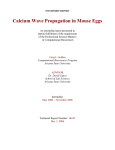
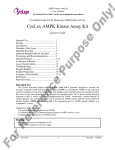

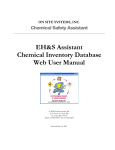
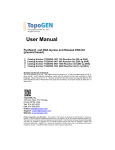

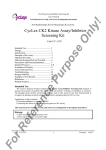

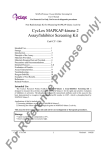
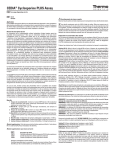

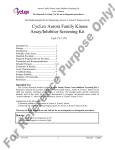
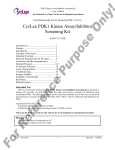

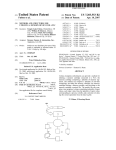




![Human Tau [pT181]Singleplex Bead Kit](http://vs1.manualzilla.com/store/data/005836208_1-535995cf2d5d3bddb8b2b8afcdb790d7-150x150.png)